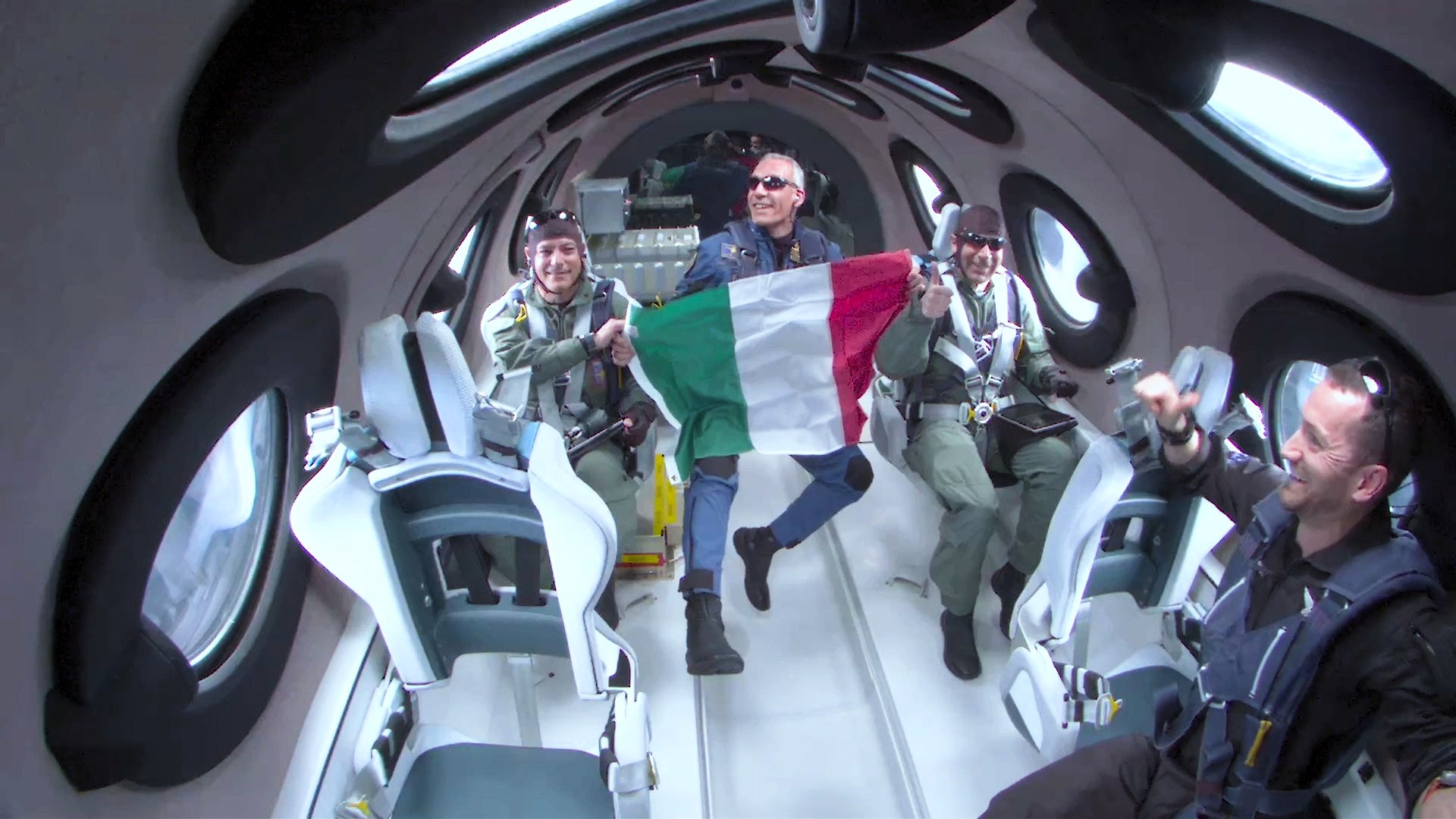After almost two decades of ups and downs, Virgin Galactic sent its first customers to the edge of space aboard its VSS Unity rocket plane.
Today’s 72-minute-long Galactic 01 flight, which took three Italians on a suborbital research mission, marked the start of the company’s commercial operations at Spaceport America in New Mexico.
Two of the fliers, Col. Walter Villadei and Lt. Col. Angelo Landolfi, are officers in the Italian Air Force. The third Italian, Pantaleone Carlucci, is an engineer at the National Research Council of Italy. The crew brought along 13 research payloads, focusing on biomedicine, thermo-fluid dynamics and materials science.
Two Virgin Galactic pilots — Mike Masucci and Nicola Pecile — were at VSS Unity’s controls, and astronaut instructor Colin Bennett took a seat alongside the Italians. Two other pilots, Kelly Latimer and Jameel Janjua, flew the twin-fuselage VMS Eve airplane that carried Unity into the sky from Spaceport America and released it from a height of 44,500 feet to light up its hybrid rocket motor.
Unity’s flight reached an altitude of 52.9 miles (85 kilometers) at the top of the ride. That’s not quite all the way to the 100-kilometer height that currently serves as the internationally accepted boundary of outer space, but it’s well beyond the 50-mile height that NASA, the U.S. military and the Federal Aviation Administration use as their space standard.
In addition to tending their experiments and literally indulging in some flag-waving, the spacefliers were able to float around for a few minutes in zero gravity and gaze out the window at a curving Earth beneath the black sky of space.
The rocket plane glided back down to Spaceport America for a runway landing. “This groundbreaking collaboration propels Italy into the new era of commercial spaceflight as a pathfinder, fostering innovation and paving the way for further technological enhancement in this strategic domain,” Villadei said afterward.
The list price for a flight on VSS Unity is $450,000 — but that doesn’t necessarily reflect what the Italians paid. On one hand, they flew under a deal that was struck between Virgin Galactic and the Italian government in 2019, when the list price was lower. On the other hand, Virgin Galactic CEO Michael Colglazier said in a CNBC interview that the ticket prices for research customers like the Italians “generally start at about $600,000 per, on a seat-equivalent basis.”
Virgin Galactic was founded in 2004 by British billionaire Richard Branson, who had hoped to start offering suborbital space trips just a few years later. The development effort took much longer than expected, however, and suffered setbacks including a fatal accident on the ground in 2007 and the loss of the VSS Enterprise and one of its pilots in 2014.
The company successfully sent a pair of test pilots beyond the 50-mile line for the first time in 2018. That milestone mission was followed by several test flights crewed exclusively by Virgin Galactic personnel, including Branson — setting the stage for today’s inaugural commercial mission.
Colglazier said the Galactic 01 flight would usher in “a new era of repeatable and reliable access to space for private passengers and researchers.” Galactic 02, which is billed as Virgin Galactic’s first spaceflight with private-sector astronauts, is scheduled for August.
“We expect VSS Unity to continue with monthly space missions while we simultaneously work to scale our future spaceship fleet for a global audience,” Colglazier said.
Virgin Galactic isn’t alone in the commercial spaceflight market: Jeff Bezos’ Blue Origin space venture began flying paying passengers on its New Shepard suborbital rocket ship in mid-2021, and SpaceX is working with Shift4 CEO Jared Isaacman on several privately backed orbital missions.

